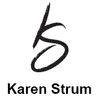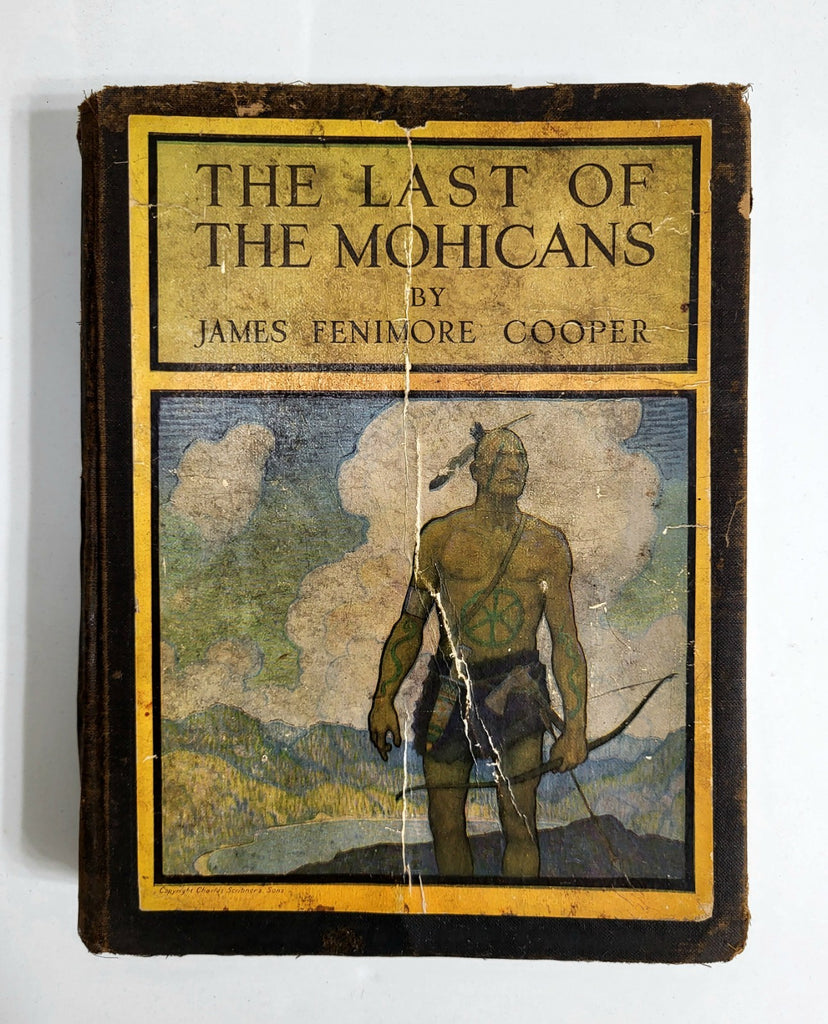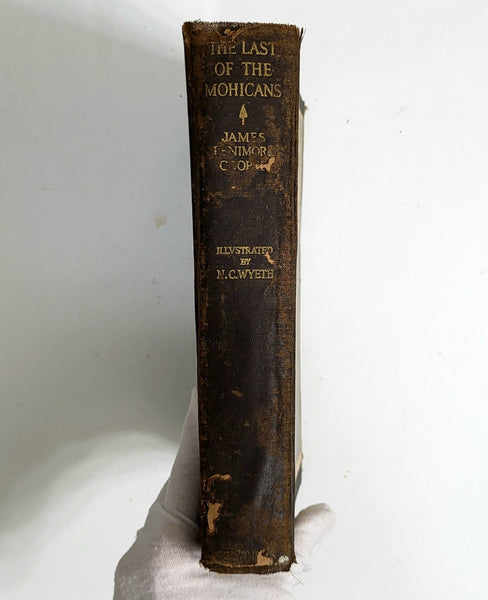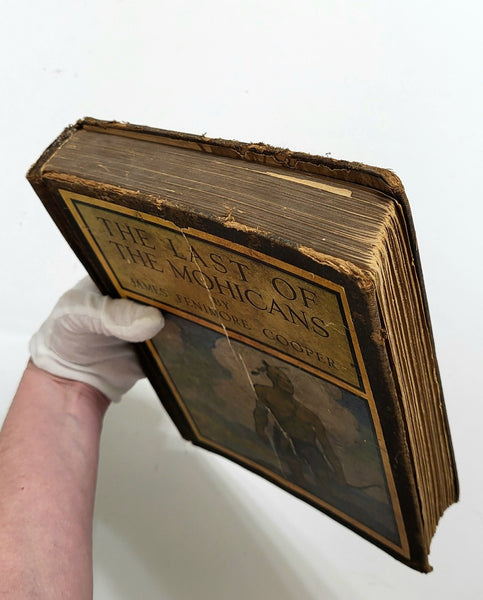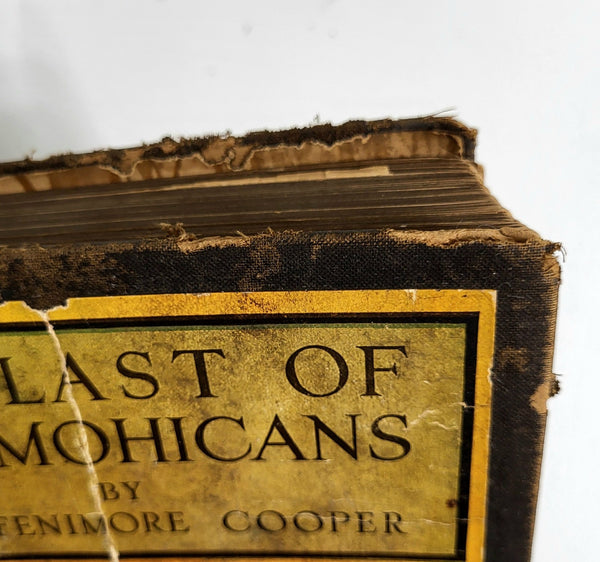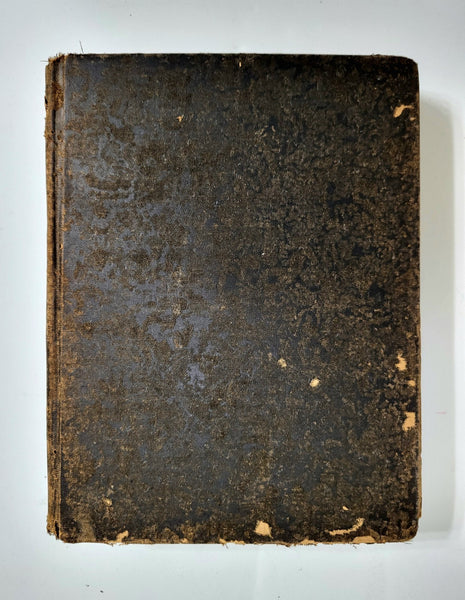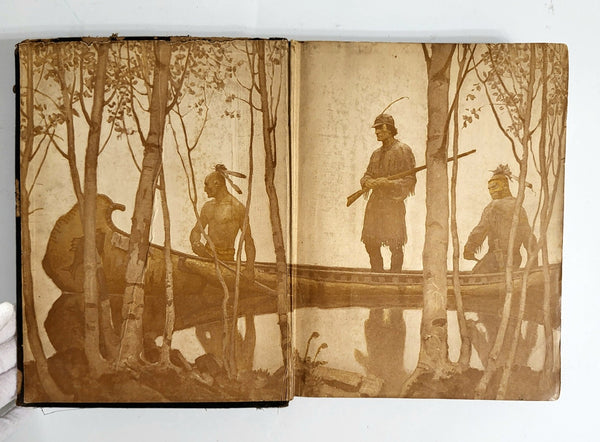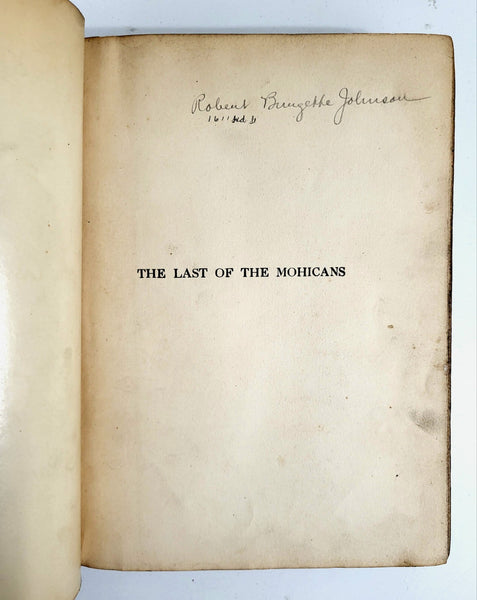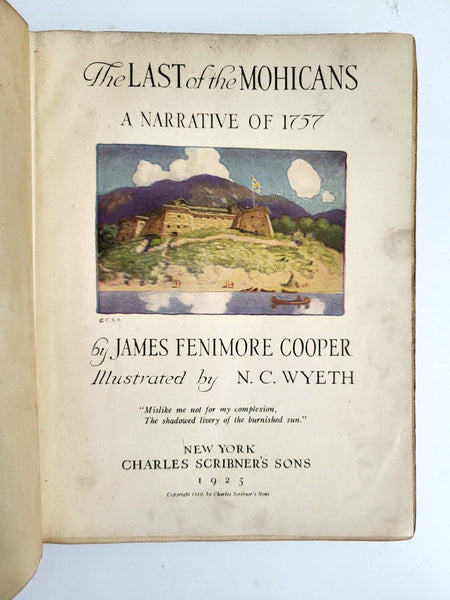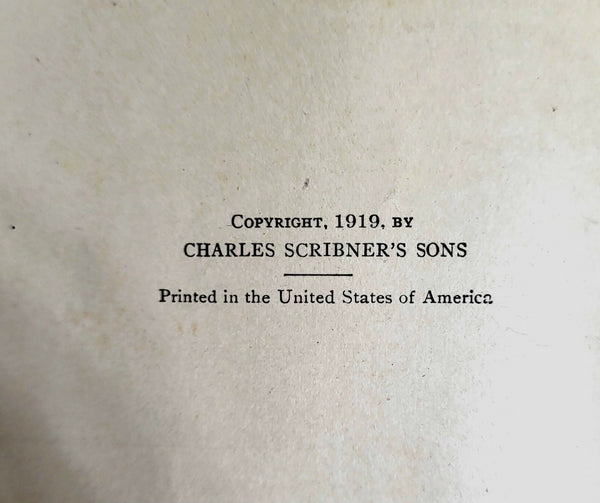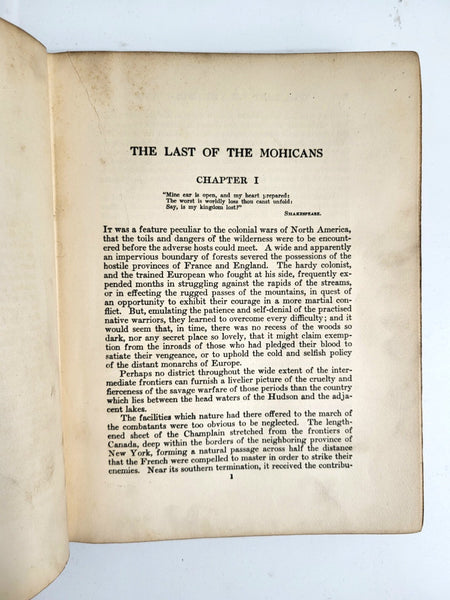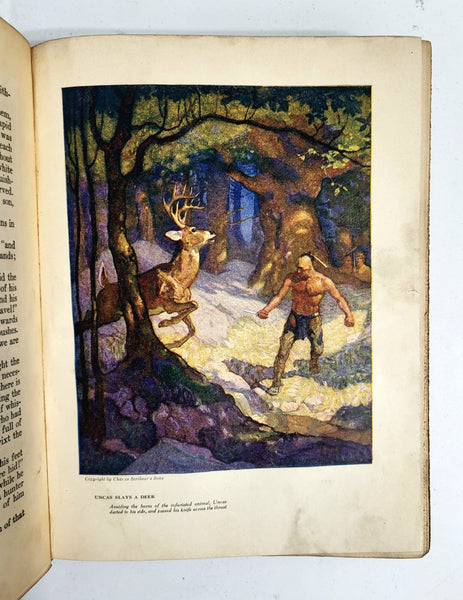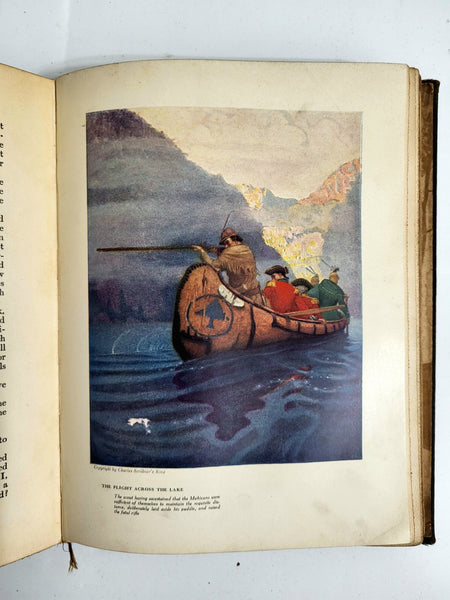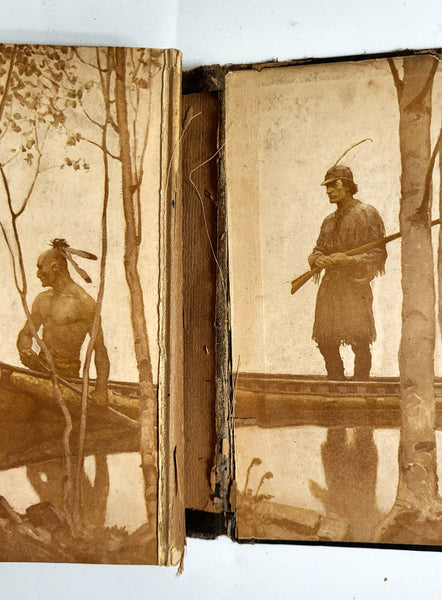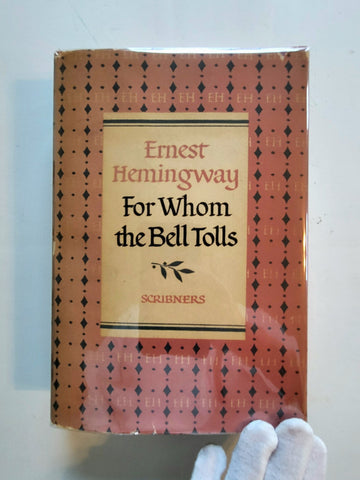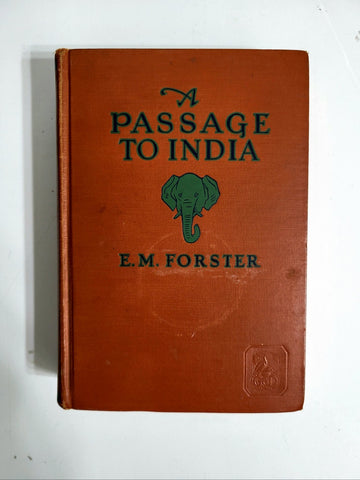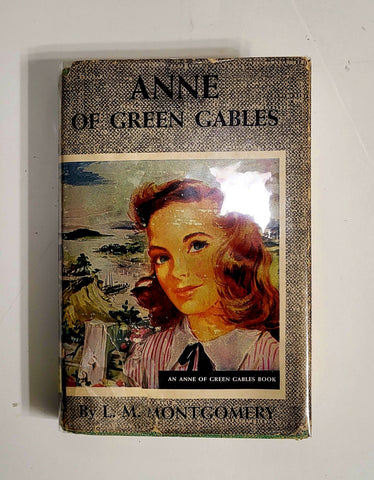1925 Last of the Mohicans Illustrated by N.C. Wyeth – James Fenimore
This battered beauty is my 1925 edition of The Last of the Mohicans: A Narrative of 1757 by James Fenimore Cooper, graced with color illustrations by the legendary N.C. Wyeth. Published by Charles Scribner’s Sons in New York, this copy has clearly lived a full and rugged life—much like the frontier characters it chronicles. The spine is clinging to the front hinge like a soldier holding the last line, and the boards are crumbling like ancient bark. There’s a deep crease down the middle of the front cover—perhaps a battle scar from decades of bookshelf skirmishes. Handle it with care, and with reverence. Books like this have earned their wear.
Originally published in 1826, The Last of the Mohicans is one of the earliest American adventure novels and arguably Cooper’s most enduring work. Set during the French and Indian War, the story follows Hawkeye (the white scout), and his companions Chingachgook and Uncas—the so-called “last” of the Mohican tribe—as they escort two English sisters through a war-torn wilderness. It’s packed with ambushes, daring escapes, and a cast of characters tangled in questions of identity, loyalty, and survival.
This book is important not just for its swashbuckling plot but for its place in American literary history. Cooper wrestled with ideas of race, colonialism, and the “noble savage” myth in a way that was both progressive for its time and deeply problematic by modern standards. The famous opening line on the title page—“Mislike me not for my complexion. The shadowed livery of the burnish’d sun.”—is Shakespearean, but it also sets the stage for the novel’s complex relationship with race and identity. Over time, critics have taken issue with the romanticization of Native Americans and the way Cooper’s pen straddled admiration and stereotype. And yet, it sparked a national mythology—an imagined wilderness where character was forged under pressure and identity was fluid like a river.
But let’s not overlook the real treasure here: the artwork. N.C. Wyeth, one of the great illustrators of the Golden Age, brings the forest and its heroes vividly to life with full-color plates that are collectible in their own right. His work feels mythic, visceral, and haunting—making this edition a must-have for lovers of classic American art as well as literature.
Yes, the pages are hand-cut and originally top-stained red (though the color has since mellowed like an old campfire ember). There’s a name and address handwritten inside, a whisper from a previous owner—someone who, like me, must have found something worth holding onto in these pages.
So, if you’re the kind of person who doesn’t mind a little dust with your destiny, or a cracked spine with your cultural critique, this may just be your next great bookish adventure. Just don’t forget to pack your glue.
